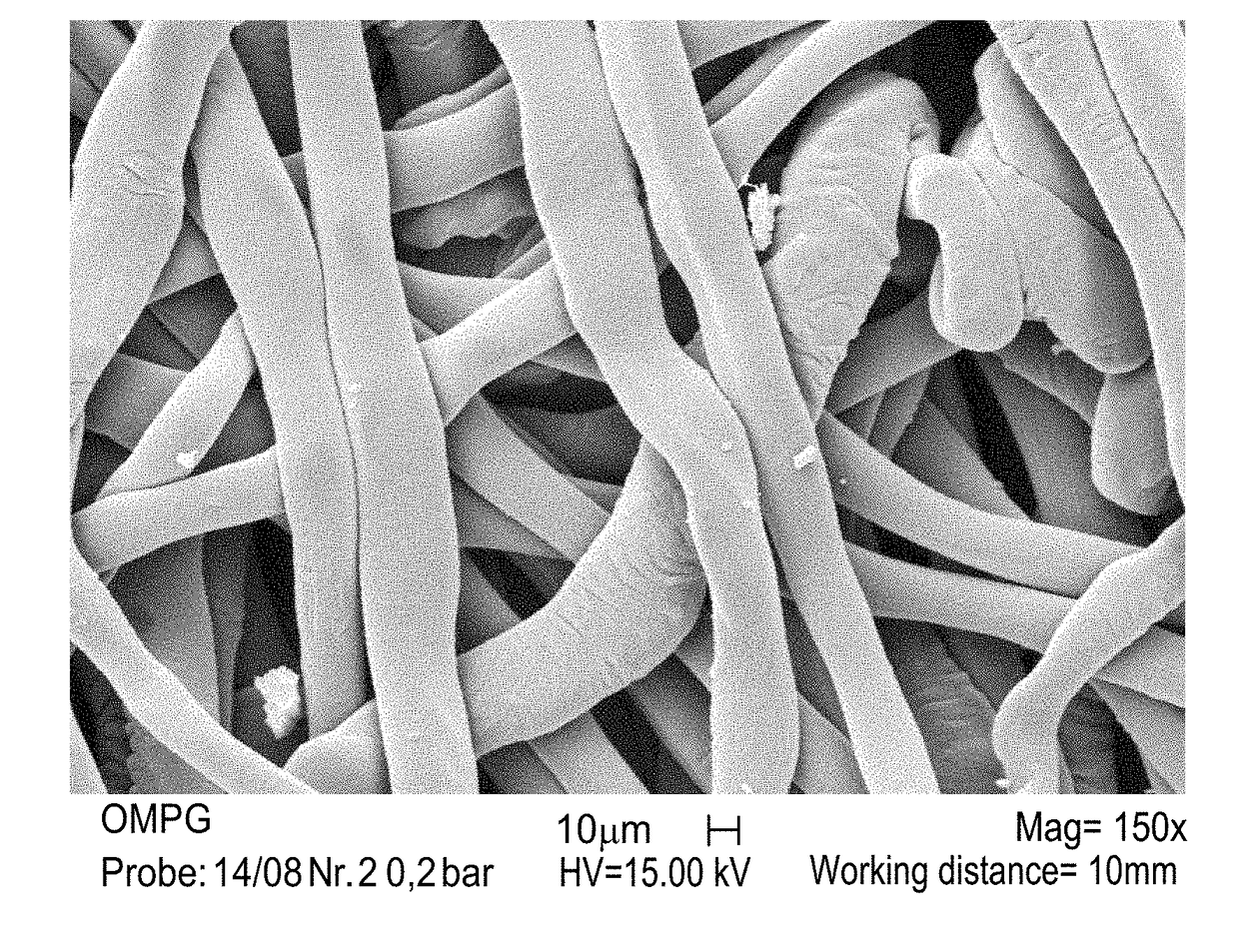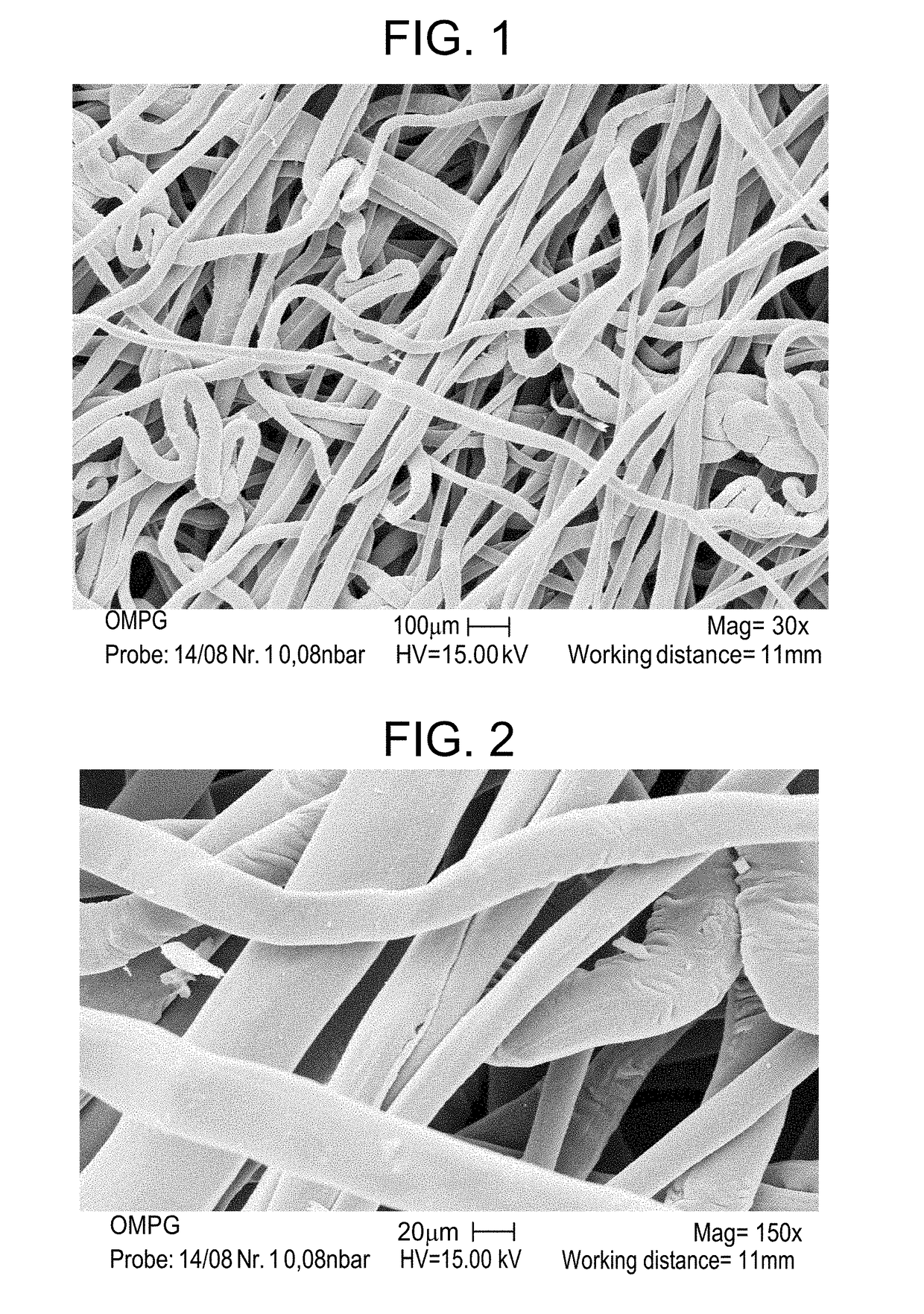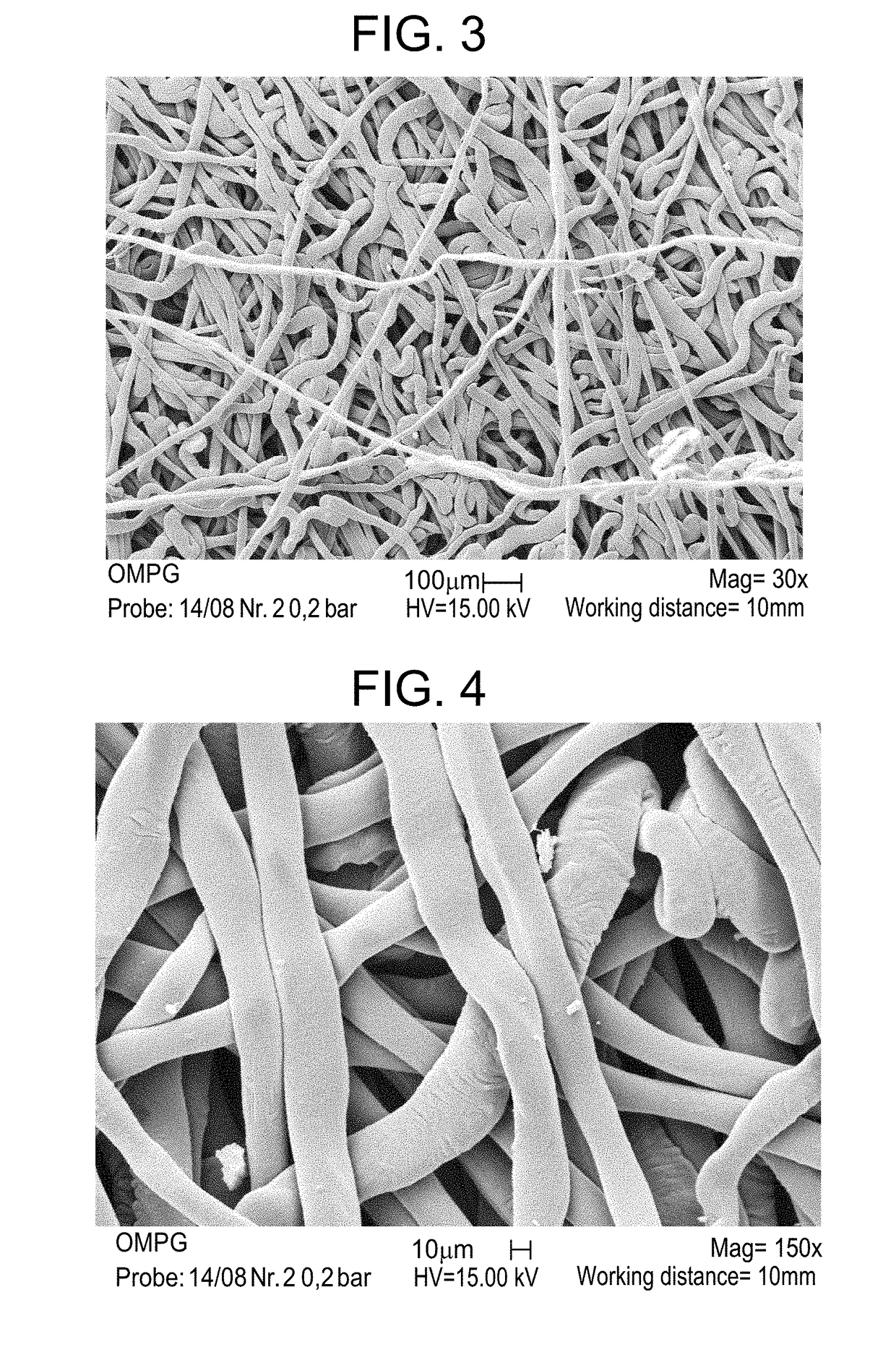Highly functional spunbonded fabric made from particle-containing fibres and method for producing same
a technology of fibers and textile fabrics, applied in stretch-spinning methods, textiles and papermaking, chemical after-treatment of cellulose/protein filaments, etc., can solve the problems of comparatively low quality requirements, inconvenient availability of fibers having a fraction of functional additives which amounts to and inconvenient production of fibers with more than 40 wt % of functional additives. achieve high self-binding capacity
- Summary
- Abstract
- Description
- Claims
- Application Information
AI Technical Summary
Benefits of technology
Problems solved by technology
Method used
Image
Examples
example 2
[0047]A cellulose solution produced as per Example 1 was solidified via solution spinning process (solution blowing) at a solution temperature of 95° C., a blown with warm air at 80° C. and spraying with a water mist immediately on exit from the die blow unit and formed into a direct nonwoven by laydown on a foraminous belt. The forming operation was stable and the nonwoven obtained was, following complete extraction of the solvent and drying at 60° C., readily usable as ion exchange nonwoven. The functional nonwoven was mechanically so stable that it could be cut to size and introduced into the water treatment rig. An additionally performed moderate needling and thus further compaction was likewise possible without the nonwoven becoming destroyed in the process.
example 3
[0048]104 g of sodium polyacrylate (Super Absorbent Polymer, SAP, Product no. Z 3162 of Stockhausen GmbH; particle diameter D50=5 μm; D1002 nonwoven translated to WRV 176%, 200 g / m2 nonwoven translated to WRV 633%. This material can be used for high liquid retention applications, such as sanitary articles (diapers, incontinence inlays, sanitary napkins, and similar goods), wound management, nonwoven with ion exchange functionalities, nonwoven with water retention functionalities in agriculture and horticulture.
example 4
[0049]2,430 g of a paraffin melting at 18° C. (technical purity >97%, C-16 n-paraffin (n-hexadecane) PARAFOL® 16-97, co Sasol Ltd., density at 40° C.: 0.768 g / cm3) together with 373 g of a mixture of hydrophobized layered silicate and high-dispersed silica were mixed intensely with 15,960 g of 60 mass-% aqueous NMMO. 1,027 g of crushed cellulose were added to the mixture. The mixture was heated under vacuum to a temperature of the solution of 95° C. until a complete dissolution was observed. The dissolution state of the cellulose was controlled using a micro-picture in thin film. The spinning solution was subsequently gear pumped at 95° C. to a spinneret die (30 circular holes having a diameter of 0.5 mm) and spun at 105° C. The composition of the spinning solution is shown in table 1. The polymer strands exiting the spinneret were sprayed with a water mist immediately on exit from the die, at a distance of 5 mm, to initiate coagulation. Subsequent to coagulation initiation, the fib...
PUM
| Property | Measurement | Unit |
|---|---|---|
| diameter | aaaaa | aaaaa |
| volume fraction | aaaaa | aaaaa |
| thickness | aaaaa | aaaaa |
Abstract
Description
Claims
Application Information
 Login to View More
Login to View More - R&D
- Intellectual Property
- Life Sciences
- Materials
- Tech Scout
- Unparalleled Data Quality
- Higher Quality Content
- 60% Fewer Hallucinations
Browse by: Latest US Patents, China's latest patents, Technical Efficacy Thesaurus, Application Domain, Technology Topic, Popular Technical Reports.
© 2025 PatSnap. All rights reserved.Legal|Privacy policy|Modern Slavery Act Transparency Statement|Sitemap|About US| Contact US: help@patsnap.com



